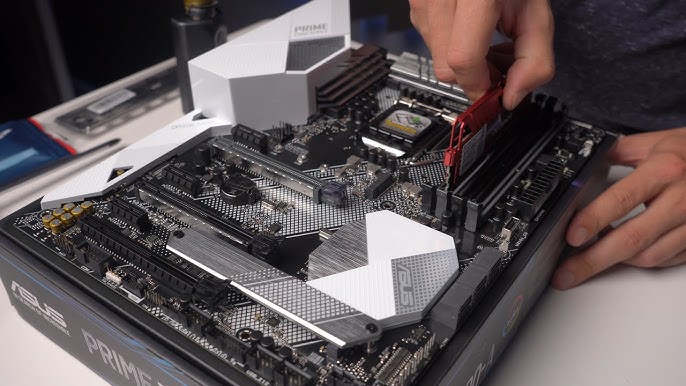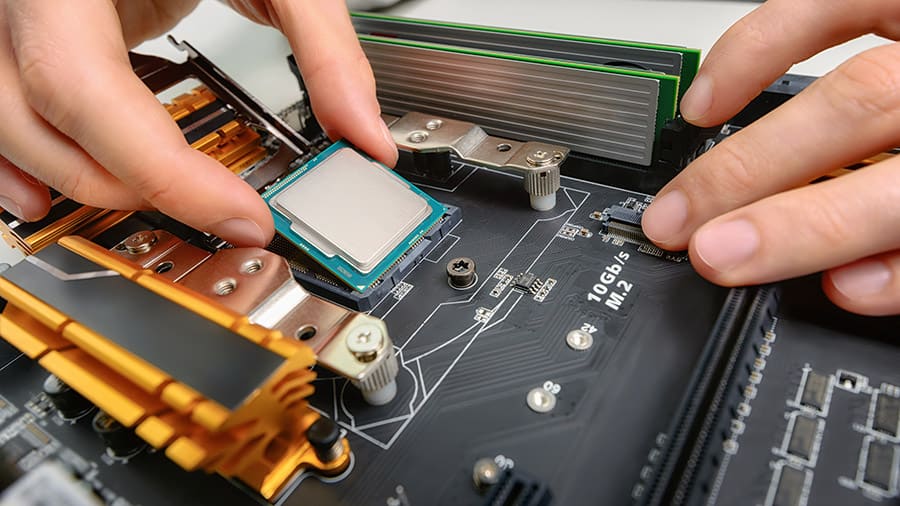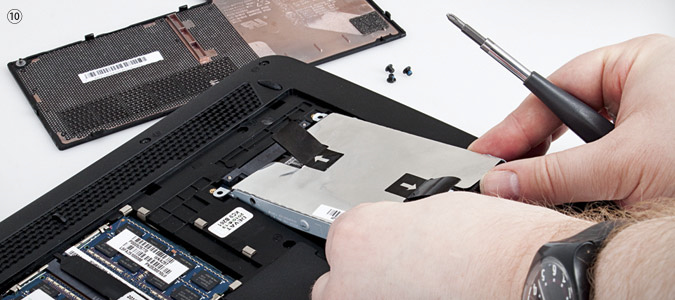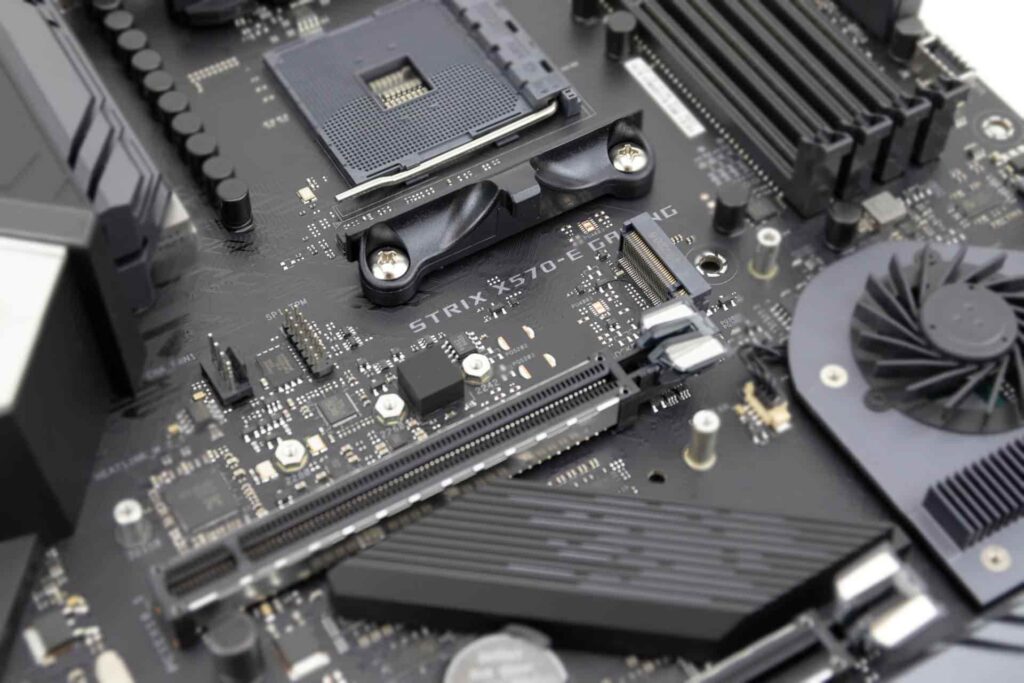Do I Need to Reinstall Windows with New Motherboard? – Unveiling the Seamless Transition!
Are you upgrading your motherboard? Do you need to reinstall Windows? In short, yes. A new motherboard brings hardware changes, demanding a clean Windows installation for seamless compatibility.
Therefore, explore the why and how in this quick guide. Don’t skip—ensure your system’s optimal performance and stability.
The Crossroads To Reinstall or Not to Reinstall – Stay Informed!
1. Compatibility Conundrum:
Windows configures itself during installation based on the specific hardware it detects. A new motherboard introduces different chipsets, controllers, and features. Therefore, With reinstalling Windows, your operating system might be able to adapt, leading to compatibility issues.

2. Optimizing System Performance:
A fresh Windows installation is like a clean slate for your operating system. It allows Windows to tailor its settings and drivers to the nuances of the new motherboard, optimizing the system for peak performance.
Furthermore, it’s akin to giving your system a spa day, rejuvenating it for the challenges ahead.
Navigating Activation Challenges with Ease – Keep Yourself Updated!
1. Understanding Windows Activation:
Microsoft ties Windows licenses to a hardware change, such as a new motherboard, which may trigger the need for reactivation. This step is a measure to prevent unauthorized operating system use.
2. Tips for Smoother Activation:
To ensure a seamless transition, link your Windows license to a Microsoft account before the hardware change. This step makes reactivation a breeze, as you can log in and reactivate without the need for a new product key.
Unleashing the Power of Stability and Performance – Stay with Us!
1. Stability Through Simplicity:
A clean Windows installation reduces the risk of driver conflicts and system instability. The new motherboard deserves a fresh start, ensuring every component works harmoniously to provide a stable and reliable computing environment.

2. Performance Boost:
Think of reinstalling Windows as a performance optimization tool. By aligning your operating system with the intricacies of the new motherboard, you pave the way for improved speed, responsiveness, and overall efficiency.
Back-up Strategies Before Reinstallation – Safeguarding Your Data!
1. Importance of Data Back-up:
Data is the lifeblood of your digital world, containing memories, work, and essential files. Reinstallation involves wiping the system drive, making data backup imperative to prevent loss.
2. Various Back-up Methods:
- External Hard Drive or SSD: Transfer your important files to an external drive. This method is straightforward and ensures easy access to your data post-reinstallation.
- Cloud Storage Services: For secure online storage, use cloud services like Google Drive, Dropbox, or OneDrive. This security act not only acts as a backup but also provides accessibility from anywhere.
- Dedicated Back-up Software: Consider using different backup software like Acronis True Image or Macrium Reflect for comprehensive system back-ups, allowing you to restore your entire system if needed.
3. Back-up Tools for Users:
- Windows Back-up and Restore: Leverage the built-in Windows Back-up and Restore feature for a simple and user-friendly way to back up your files.
- File History: Windows File History allows you to automatically store your files on an external drive, ensuring a continuous backup of your essential data.
- EaseUS Todo Back-up: This third-party tool provides a range of backup options, including file, disk, and system back-up, offering flexibility based on your needs.
Therefore, adopting these backup strategies safeguards your data against potential loss during reinstallation.
Step-by-Step Guide to Reinstalling Windows – A Seamless Transition!

- Gather Essential Tools: Ensure you have your Windows installation media, whether a USB drive or DVD. Also, have your product key on hand.
- Back-Up Your Data Again: Before proceeding, double-check that all your important files are safely backed up. It’s always better to be cautious.
- Access BIOS/UEFI: Restart the computer and enter the BIOS menu. Set the boot order to prioritize your installation media.
- Begin Windows Installation: Insert your installation media and restart the computer. Follow the instructions to begin the Windows installation process.
- Select Custom Installation: Select the custom installation option to start a clean install. This ensures a fresh start, avoiding potential conflicts with old drivers.
- Format the System Drive: During installation, select the system drive and format it. It will erase the existing Windows installation, making way for the new one.
- Enter Product Key: Input your Windows product key when prompted. It is a crucial step for successful activation.
- Complete Installation: Follow the remaining installation steps, such as creating a user account and setting up preferences, until the process is complete.
- Install Drivers: After Windows installation, install the latest drivers for your new motherboard. Refer to the manufacturer’s website for the most up-to-date drivers.
- Restore Backed-Up Data: Once Windows and drivers are installed, restore your backed-up data. This ensures that your files and settings are back in place.
- Windows Activation: Verify Windows activation by checking the system settings. If necessary, reactivate using your product key.
- Update Windows: Ensure your system is up to date by installing the latest Windows updates. This enhances security and performance.
Moreover, by following this user-friendly guide, you’ll easily navigate the reinstallation process, ensuring a seamless transition to your new motherboard.
Staying Informed About Future Changes – Keep Your System Updated!
In the ever-evolving landscape of technology, staying informed is your best ally. Regularly check for Windows and motherboard firmware updates to ensure continued compatibility and performance.
Common Mistakes to Avoid – Stay Safe!

- Neglecting Compatibility Checks: Failing to verify compatibility between the new motherboard and existing components can lead to functionality issues. Always ensure compatibility before making the upgrade.
- Skipping the Back-up Process: Refrain from underestimating the importance of backing up data before a clean Windows installation can result in irreversible data loss. Take advantage of this crucial step.
- Ignoring Firmware Updates: Overlooking firmware updates for the new motherboard can hinder performance and stability. Stay proactive and keep your system up-to-date.
- Rushing the Activation Process: Attempting to rush through the activation process can lead to unnecessary stress. Take the time to link your Windows license to a Microsoft account for a hassle-free experience.
Frequently Asked Questions:
1. What happens if I don’t reactivate Windows after a motherboard change?
Failure to reactivate Windows may lead to limitations in system functionality and access to certain features. It’s advised to reactivate promptly to ensure a seamless experience.
2. How can I back up my data before reinstalling Windows?
Use reliable backup tools or cloud services to safeguard your data. Ensure you have copies of important files before initiating the reinstall.
3. Will reinstalling Windows delete all my files?
Yes, a clean installation of Windows will wipe the system drive. Backup your important files before proceeding to avoid data loss.
4. Are there any risks associated with not reinstalling Windows after a motherboard change?
Yes, risks include driver conflicts, system instability, and suboptimal performance. Reinstalling Windows mitigates these risks, ensuring a smooth transition to your new motherboard.
Conclusion:
In the grand scheme of technological evolution, upgrading your motherboard is a leap forward and for that purpose reinstalling Windows is a must. Whether to reinstall Windows is not a hurdle but an opportunity—a chance to optimize, adapt, and thrive in the ever-changing digital realm.